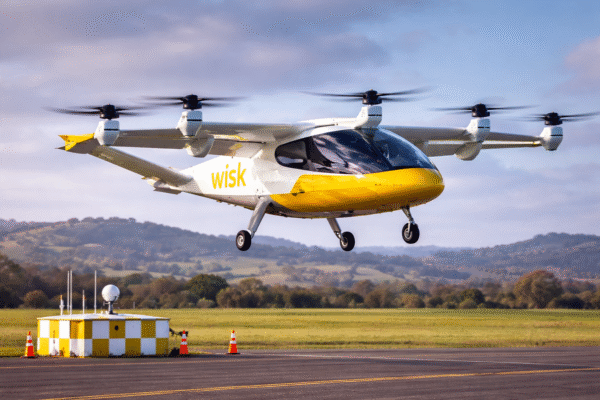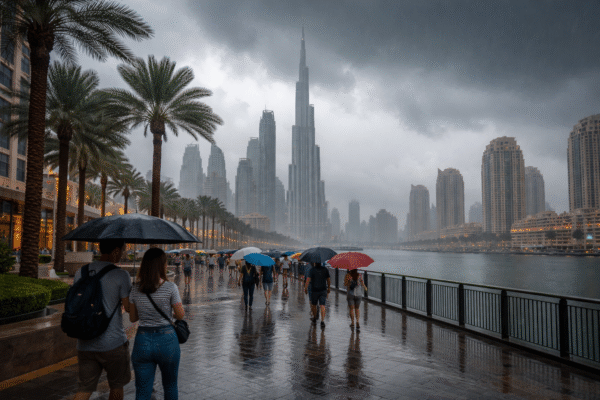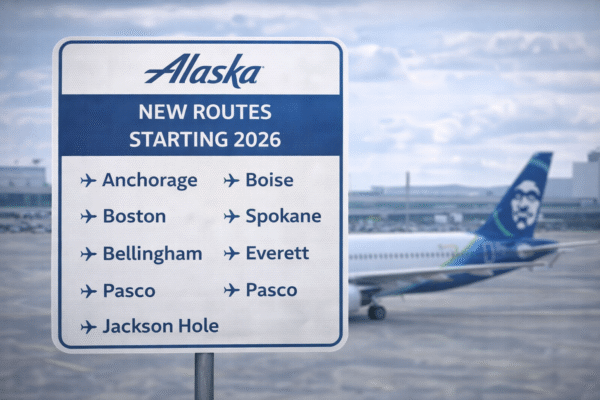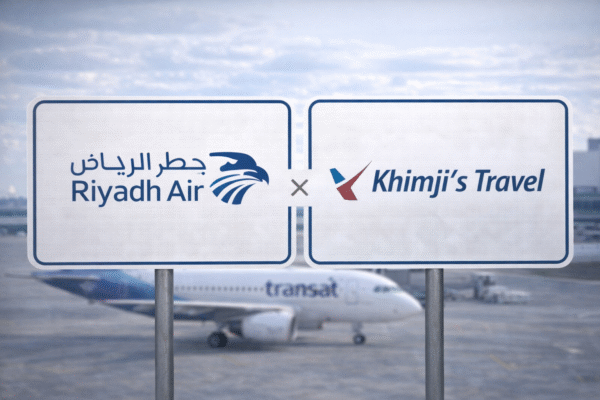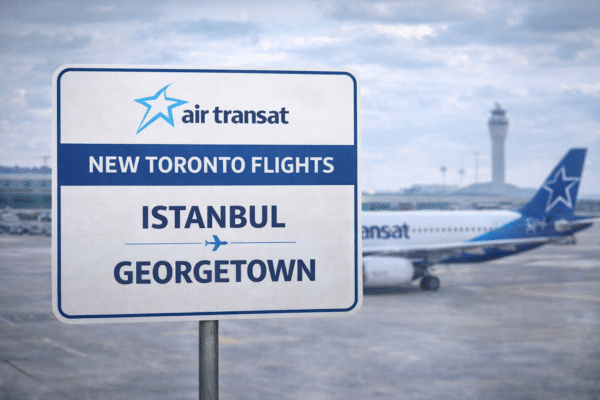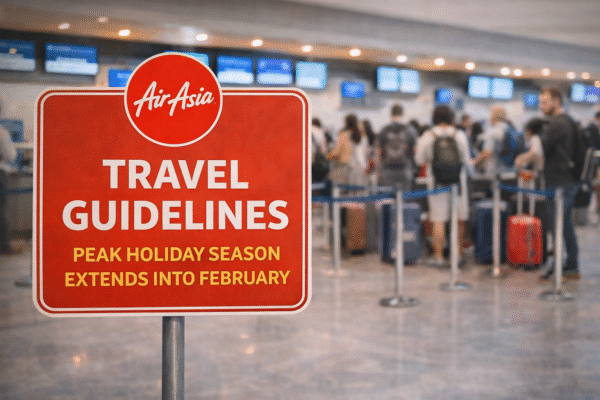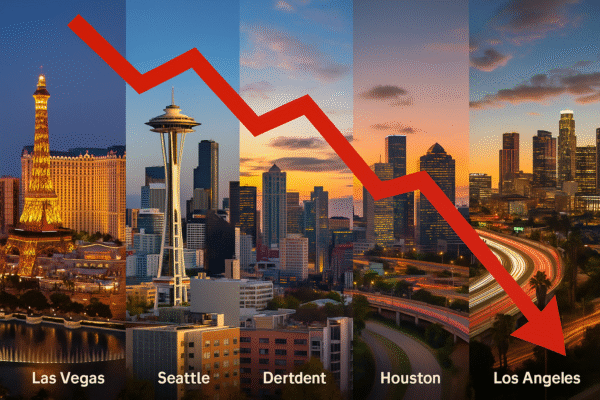The US travel industry is facing one of its toughest years in recent history, with major cities like Las Vegas, Seattle, Portland, Detroit, Houston, and Los Angeles recording sharp drops in visitor numbers during the first seven months of 2025. Rising travel costs, persistent inflation, and weakened international demand are creating a perfect storm that is testing the resilience of America’s most popular destinations.
This downturn reflects a larger trend in the global travel market, where economic pressures and shifting traveler preferences are reshaping tourism patterns. While secondary cities and rural destinations see modest gains, urban centers are grappling with steep declines that threaten local economies dependent on tourism.
Las Vegas: Visitor Numbers and Revenue Slide
Las Vegas, long celebrated as the entertainment capital of the US, saw 3.09 million visitors in July 2025, marking a 12% year-over-year drop. Hotel occupancy rates slid from 83% in July 2024 to 76.1%, while the average daily room rate fell to $154.76. Revenue per available room dropped a notable 12.1%, signaling growing consumer caution.
Analysts attribute the slowdown to high hotel pricing along the Strip and a pullback in discretionary spending. Entertainment venues, casinos, and luxury retailers are also feeling the pressure, highlighting the ripple effect a tourism slowdown can have on the city’s service-driven economy.
Seattle: The Cruise Capital Faces a Sharp Drop
Seattle recorded the steepest decline among large US cities, with international arrivals down 27% year over year. The downturn is particularly damaging given the city’s heavy reliance on the Alaskan cruise season, which fuels hotel bookings, restaurants, and tours during the summer.
Airfare costs and expensive accommodations have made Seattle less competitive for travelers, while slow visa processing continues to deter international visitors from markets such as Japan and South Korea. Compounding the problem, nearby cities like Vancouver and Portland are emerging as cheaper, less congested alternatives for travelers to the Pacific Northwest.
Portland: Rising Costs and Negative Perceptions
Portland’s reputation as a vibrant, creative hub is being overshadowed by an 18.3% decline in international tourism in the past year. The city, once known for its affordable food scene and easy access to outdoor adventures, is now struggling with rising hotel and dining costs that have priced out many potential visitors.
Adding to the challenge are safety concerns and negative media coverage of downtown, which have affected traveler confidence. For businesses that rely heavily on tourist traffic — from local breweries to boutique hotels — the decline is putting significant financial pressure on Portland’s tourism economy.
Detroit: Recovery Efforts Stalled
Detroit, which has been working hard to rebrand itself as a cultural and entertainment hub, is also seeing its momentum stall. Tourism numbers are down 17% in 2025, eroding gains made in previous years.
High regional travel costs and reduced road trip tourism have particularly hurt Detroit, which depends heavily on visitors from nearby states. While the city has invested in promoting its music history, art museums, and revitalized riverfront, low international demand and inflation are making recovery more difficult.
Houston: Business and International Travel Declines
Houston is facing one of the steepest drops, with tourism projected to fall by 20% in 2025. Historically driven by business travel, conventions, and visitors from Latin America, the city is struggling as remote and hybrid work reduce the demand for in-person conferences.
Additionally, visa delays and economic uncertainty in Latin American markets have cut into international arrivals. Local officials are now looking to strengthen domestic tourism campaigns and diversify attractions to offset losses from weakened business travel.
Los Angeles: High Costs Push Tourists Away
Los Angeles, one of the most iconic destinations in the US, is experiencing a 10.5% drop in visitors this year. Skyrocketing hotel and dining costs, combined with a strong US dollar, have made LA an expensive destination for international travelers from Europe and Asia.
Although Los Angeles remains a dream location for many, the rising cost of visiting is prompting travelers to opt for cheaper destinations, both within the US and abroad. This downturn poses serious challenges for the city’s economy, which relies heavily on visitor spending to support hospitality, retail, and entertainment sectors.
Common Factors Behind the Decline
Across these cities, several key trends are driving the downturn:
- Inflation and high travel costs: Elevated airfare, hotel rates, and dining expenses are reducing travelers’ budgets.
- Weaker international demand: A strong US dollar and economic uncertainty are discouraging visitors from key markets abroad.
- Shifting preferences: Younger travelers are opting for shorter, budget-friendly trips or exploring destinations that provide more value for their money.
- Demographic changes: Aging travelers are reducing long-haul trips, further cutting into demand.
Economic Ripple Effects
The drop in visitor numbers is reverberating through local economies. Hotels report lower occupancy, restaurants face reduced foot traffic, and rideshare services see fewer bookings. Retailers in tourist-heavy districts are experiencing declining sales, and tax revenues that fund local services are falling sharply.
In Las Vegas, fewer tourists mean lower gaming revenue and reduced demand for entertainment. In Seattle, the downturn is disrupting businesses that rely on cruise ship passengers. Meanwhile, Detroit and Houston are facing slowdowns that could delay broader economic recovery efforts.
Looking Ahead
Tourism experts suggest that a rebound is possible if inflation eases and travel costs stabilize. Competitive pricing, targeted marketing campaigns, and improved visa processing could help cities regain their competitive edge.
Cities like Las Vegas and Los Angeles are exploring strategies to attract more domestic visitors, while Seattle and Portland are seeking to promote off-season travel and niche experiences to diversify their tourism base.
For now, the message is clear: adaptation is essential. Without bold and creative strategies, the US risks losing market share to international destinations offering better value and easier travel access.
For more travel news like this, keep reading Global Travel Wire



